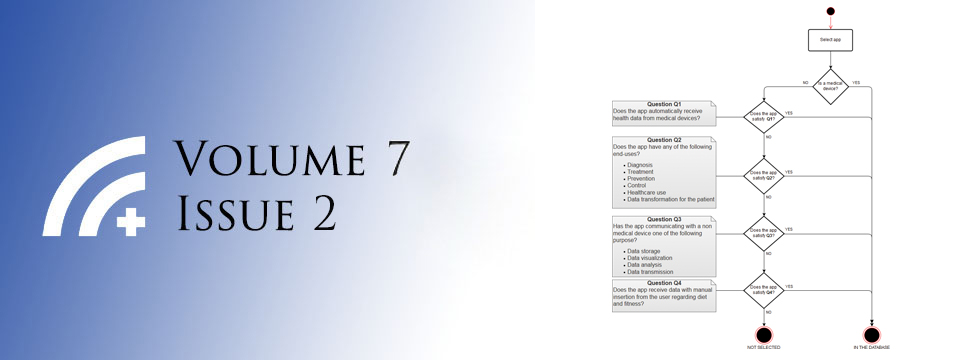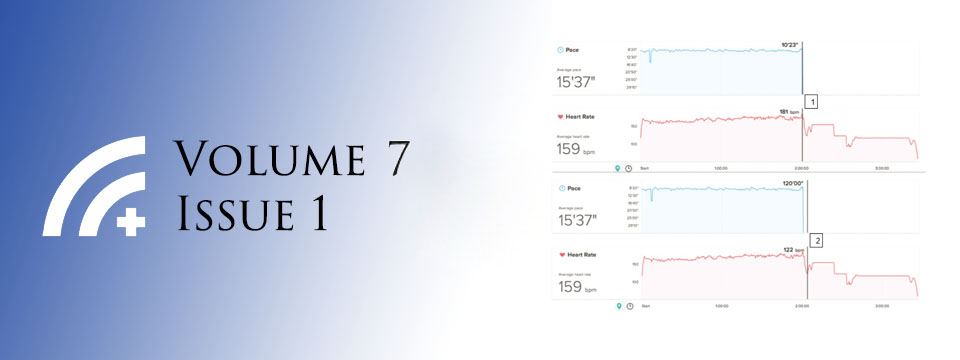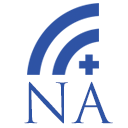Posted on Feb 11, 2014 in News |
The Unrealized Potential of mHealth
Predictions about the rapid growth of the mobile healthcare market in the future are paired with great optimism about what this technology can achieve, but despite the progress that has been made, there are still some significant limitations and concerns that might restrict the uptake of this type of technology. Until these issues can be addressed, the potential of mHealth may remain unrealized.
The Year’s Top Inventions
The growing importance of mHealth and healthcare technology in general is reflected by the inclusion of four healthcare related creations on the list of the 25 best inventions of 2013 produced by Time magazine. The selected healthcare inventions included an artificial pancreas, which can monitor blood glucose levels and control insulin release in response to them to treat type 1 diabetes, and the Rewalk bionic suit, which can translate the user’s shifts in balance and body weight into the movements of powered braceson the limbs and torso, enabling them to stand and walk. Two other healthcare inventions on the list were of more relevance to mobile healthcare. The Argus II combines an artificial retina with a video sensor mounted on a pair of glasses to improve the vision of people affected by retinitis pigmentosa, while the Edible Password Pill created by Motorola demonstrates how technology is being created that can allow communication between the body and mobile devices. The pill is currently being developed simply as a tiny chip that can be swallowed and powered by stomach acid, emitting a password signal so the user can be recognized by asmartphone or computer, but this technology might go on to have application in mHealth and other fields.
Market Growth
These developments in mHealth technology are matched by rapid growth in the value of the mHealth market. Its estimated value in 2012 was $6.7 billion, but it is expected to reach $8.3 billion by the end of 2013. Over the remainder of the decade, increasing investment in healthcare around the world, together with the development of better mHealth applications, is likely to result in even stronger growth. The global mHealth market has been projected to grow to $58.8 billion by the year 2020, which would reflect an annual compound growth rate of 32.3%.
Limitations for mHealth
Despite these signals of a positive future for mHealth, there are still some doubts about how useful the technology may be, at least in its current state. Although many of these doubts are likely to be removed as the technology develops further and as people become more comfortable with using mHealth technologies, they are still significant limiting factors that the industry needs to take account of as they create and promote their products.
The technology itself can be limiting, since mHealth apps will need to be both functional and meaningful if they are to play a significant role in healthcare, rather than simply being novelties. A recent survey of approximately 43,000 mHealth apps available from iTunes found that there were serious limitations in functionality. Only 10% of the apps scored above 40 out of 100 when rated for 25 clinical functionalities, and there were significant gaps in the types of conditions and populations being catered for, with those in greatest need, such as the elderly and people in developing countries, rarely being targeted. Popular mHealth apps were more likely to be used for monitoring diet and weight loss than for serious health conditions. The limited functionality of mHealth apps limited their use, with just five apps representing 15% of all mHealth downloads from the store, and half of the apps having been downloaded fewer than 500 times. The technology on which the apps can be used might also limit the uptake of mHealth products, since consumers are likely to have concerns about relying on mobile devices that could be damaged, run out of power, or lose their signal, for important healthcare services such as monitoring and reminders to take medication. The technology needs to be more reliable if people are to depend on it for their health.
Other significant limiting factors relate to the patient populations who mHealth has the potential to help. Although access to mobile devices capable of supporting mHealth applications is widespread in many parts of the world, there are still gaps in access in poorer populations and in the elderly, whose great need for healthcare services is often matched by a reluctance to adopt new technologies, which can make providing these services through mHealth more difficult. The willingness and ability of target populations to use mHealth products will be a serious limiting factor in the future, and it must be addressed if these technologies are to reach the people who can benefit from them. Mobile healthcare may remain an unrealized technology of the future for some time, before both medical professionals and consumers are willing to adopt and rely on it for their healthcare.
by Evelyn Dunne
Posted on Feb 10, 2014 in News |
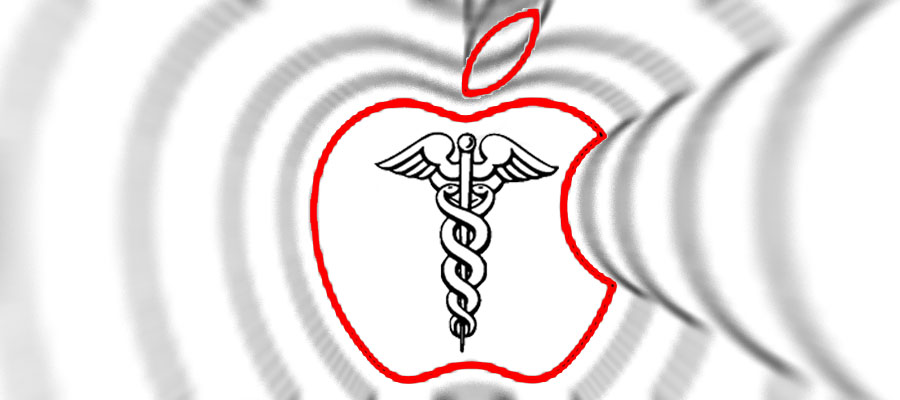
Though this is purely rumours at present, multiple sources across the internet are reporting that Apple maybe taking a keen interest in the mHealth space with its upcoming devices. Several sources in the tech industry are reporting that the upcoming version of the iPhone and the operating system, iOS 8, will focus heavily on mobile healthcare and fitness. These rumours do not seem far fetched given the surprise addition of the M7 motion coprocessor in the current iPhone 5s, which specifically is geared towards personal tracking.
One of the more interesting aspect of such speculation is the notion that the company is building a wearable device which could be in a watch form-factor. Currently dubbed the “iWatch”, this device is thought to showcase Apple’s aspirations to redefine the mHealth and personal tracking space. If the current job listings are anything to go by, these rumours may have carry some additional weight, since the company recently decided to hire sleep and exercise physiology experts.
Given that the personal tracking industry is currently booming with the release of a myriad of tracking devices such as the FitBit, Zeo & FuelBand, an integrated solution building on the iOS ecosystem makes perfect sense. If Apple can achieve its goals, mHealth will have a global heavyweight company championing its cause.
by Dr Raffy Halim
Sources:
http://9to5mac.com/tag/ios-8/
http://www.theverge.com/2014/1/31/5366242/apple-met-with-the-fda-to-talk-mobile-medical-applications-last-month
Posted on Feb 5, 2014 in News |
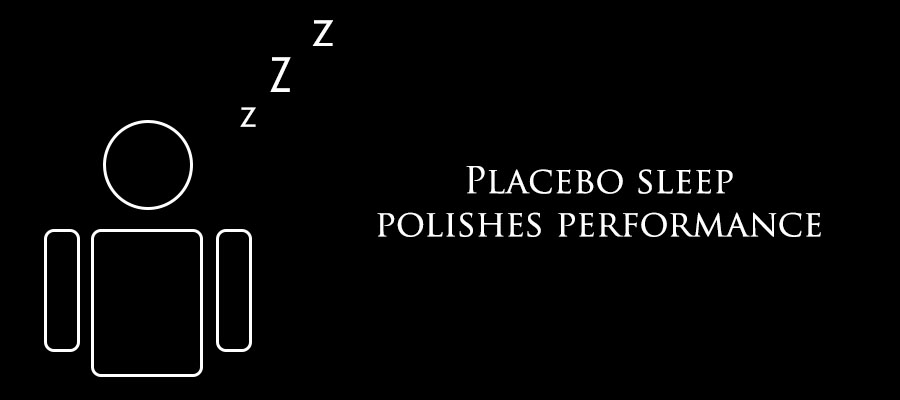
In the current day in age, it is an all too common an occurrence to feel a constant lack of good quality sleep. While it is common to hear people talk about how tired they are or how little sleep they are getting, new research shows that getting “placebo sleep” can actually increase performance as well.
So what is “placebo sleep”? The researchers suggest that an individuals mindset about the quality of their sleep could effect their performance. To test this hypothesis, they devised a great experiment. Participants were asked on a scale of 1 to 10 to rate the quality of the sleep, after which they were assigned to one of two random groups. They were given background information on sleep quality and specifically told that normal people tend to spend between 20-25% of their sleep time in REM sleep, with those spending more than 25% achieving higher results in learning tests.
The groups were attached to monitoring equipment and told that the researchers were calculating their REM sleep percentage to assess the quality of their sleep. The researchers were not calculating this at all, but rather assigning a score of either 16.2% REM sleep or 28.7% REM sleep based on their randomisation. After receiving the score, the participants were tasked with completing tests that assessed tasks commonly affected by sleep deprivation. A second control group experiment was conducted to reduce experimental bias.
The results showed that the placebo effect existed even for the effects of sleep! Participants who were assigned higher scores tended to perform better on the tests, while those assigned lower scores did worse. So next time you feel tired and sleepy, getting a colleague to mention how fresh & awake you look may just be more effective than coffee.
Source: http://www.ncbi.nlm.nih.gov/pubmed/24417326
By Dr Raffy Halim
Posted on Jan 23, 2014 in News |

What do taxi’s and healthcare have in common? Until just recently, not much at all. This changed earlier in the week when one of the core members, Oscar Salazar, of the personal transport service Uber, announced his intention to tackle the healthcare puzzle.
While details about the venture are currently scarce, investigations by several sources and anonymous tip offs have started to give this rumour some substance. An unnamed source was quoted saying, “It will work like Uber, but with doctors coming to you. I mean, it will start out for the 1%, clearly.” Further details seem to suggest that the startup maybe called “Housecall” and be based in New York. The anonymous source also suggested that as many as 40 doctors are already onboard with the venture.
Given the design of Uber’s excellent app, it is not hard to imagine a network of mobile doctors that could be summoned straight to your door via one tap on an app. Future healthcare is looking more mobile indeed.
Source: http://www.fastcompany.com/3024917/fast-feed/rumored-healthcare-startup-would-be-like-uber-but-with-doctors
by Dr Raffy Halim
Posted on Jan 21, 2014 in News |
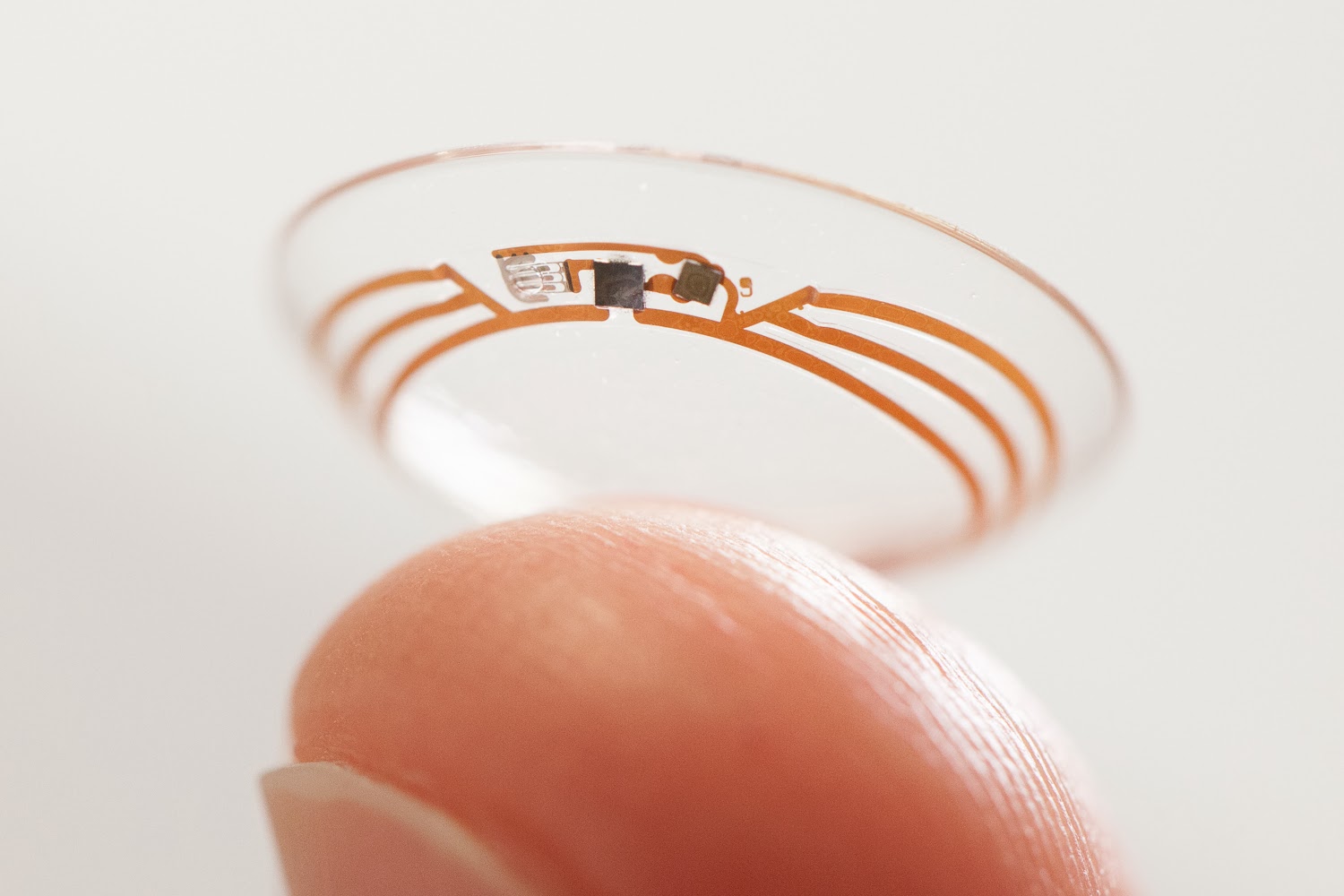
Google, the company responsible for finding most of what anyone looks for on the internet, has set it’s eyes on a new target: diabetes. The company has just announced it’s newest project, a smart contact lens, which can analyse the biochemistry of your tears to measure blood glucose levels. By ameliorating the inconvenience and pain of using finger prick testing, Google hopes to bolster regular checks and aid strict blood glucose control.
The project founders, Brian Otis & Babak Parvis, have taken to the official Google blog to say “although some people wear glucose monitors with a glucose sensor embedded under their skin, all people with diabetes must still prick their finger and test drops of blood throughout the day. It’s disruptive, and it’s painful. And, as a result, many people with diabetes check their blood glucose less often than they should.”
The device works by sandwiching a miniature glucose sensor and wireless chip between 2 layers of soft contact lens material and can take a measurement every second. It is hoped that tiny LED lights in the circuitry can be used to alert the wearer when their blood glucose starts to deviate from the “safe” range for them.
Given Google’s recent interest in wearable technology, especially in the form of Google Glass, a smart contact lens shouldn’t come too much as a surprise. If the project succeeds, the next time you see a glint in a patients eye, you may start to worry about their glucose control.
Source: Official Google blog. http://googleblog.blogspot.com.au/2014/01/introducing-our-smart-contact-lens.html
by Dr Raffy Halim
Posted on Jan 6, 2014 in News |
Despite the progress that has been made in the field of mHealth, a
recent survey of the health related apps that are currently on offer
in the iTunes store has suggested that many of them provide only
limited functionality, and that even then they generally serve only
very limited patient populations. Fulfilling the optimism about the
future of mHealth may depend on overcoming these limitations by
increasing both the functionality of mHealth apps and the range of
patients and conditions that are covered.
Assessing mHealth Apps
Despite the growing interest in using mobile healthcare apps among
both clinicians and patients, little research has been done to assess
the value of the mHealth tools that are currently available. In order
to address this lack of clinically oriented evidence, the IMS
Institute for Healthcare Informatics has conducted a survey of the
approximately 43,000 mHealth apps currently listed in the iTunes
store. The results were released at the end of November 2013 in the
report Patient Apps for Improved Healthcare: From Novelty to
Mainstream. The aim of the project was to evaluate the clinical
functionality of the apps and to assess the range of conditions and
patient populations that were covered.
Limited Functionality
The survey assessed the clinical functionality of all the mHealth apps
available from the iTunes app store against a set of 25 criteria, each
of which could earn the app up to four points, for a maximum of 100.
Only 10 percent of the apps surveyed scored more than 40 points,
indicating that the great majority of apps provided only limited
clinical use. Another issue uncovered by the survey was that many of
the apps failed to make full use of the technology. More than 10,000
of the apps were able to provide information to users, but only about
half of these apps also offered instructions, and only about 20
percent were able to record data about their users.
Limited Applications
The IMS Institute survey found that just 16,275 of the 43,000 apps
were designed to help patients who had specific health conditions or
who were undergoing particular types of treatment. Most of the apps
examined during the survey focused on overall health and wellness
rather than on helping patients with specific illnesses or targeting
the patient populations in greatest need of help. The most common
types of mHealth apps were tools that were intended to assist with
dieting and weight loss.
The populations most in need of healthcare were the least likely to be
targeted by mHealth app developers. The growing number of smartphone
owners in the developing world, whose frequent difficulties accessing
medical care would seem to make them the ideal targets for these kinds
of applications, but few mHealth tools are designed for them. Older
people, over the age of 65, are also in particular need of healthcare,
but they were another neglected population that was unlikely to be
targeted by the developers of mHealth apps, and they were also
unsurprisingly among the least likely to download these types of apps.
This was not entirely a result of the limited availability of apps
targeted toward this population. The over 65s were also less familiar
with the technology, with only 18 percent of them owning their own
smartphone. If they are to be reached, it is likely to be via their
younger caregivers. More than half of the 45 to 54 year olds who might
need to care for elderly relatives are smartphone users. Convincing
consumers, particularly in the over 65 age group, to rely on apps and
easily damaged or lost mobile devices for their healthcare, could be
difficult.
Limited Uptake
The survey revealed that just five of the apps available on iTunes
accounted for 15 percent of all mHealth downloads from the service,
and over half of the apps had been downloaded fewer than 500 times.
The researchers suggested that the lack of information on the utility
of the available apps might be a factor in reducing the uptake of
mHealth tools, while the reluctance of clinicians to make
recommendations in the absence of any formal guidelines or clinical
evidence could also be limiting. While the physicians who were
contacted by the survey team were aware that mHealth could potentially
be very useful to their patients, they did not feel comfortable about
directing patients to use particular health apps. The evidence on
clinical functionality provided by this survey might be the first step
to providing physicians with the evidence they need to feel confident
about recommending mHealth applications.
News article by Evelyn Dunne


